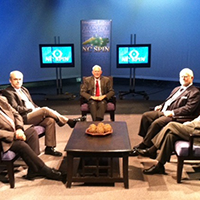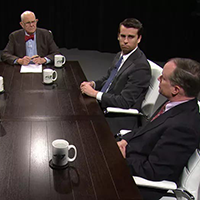Smartphones aren't making our children smart
Published July 17, 2025
By Tom Campbell
January 9, 2007, was an historic day. Apple CEO Steve Jobs announced the creation of a device called the iPhone. When released for sale in June, people were able to carry Internet access, a camera and music storage around in their pockets. It changed our world.
The iPhone gained immediate acceptance - at first mainly with men. Now 8-year-olds are boasting the devices. They are everywhere and it isn’t unusual to see people walking down the street, driving their cars, in conversation with friends, at work or in bed checking in. Data indicates the average person checks their phones 96 times a day and spends more than 4 hours a day consulting their smartphone.
That data pales in comparison with our teens, who spend a reported 8 ½ hours in front of screens. Even 8–12-year-olds devote more than 4 hours a day to screens.
But here is the frightening news. School children reportedly spend 1.5 hours during a 6.5 hour school day on their phones, mostly checking messages or finding entertainment and games. One in three students report being distracted by cell phone messages during class. Those numbers escalated after 2015 and really took off during COVID. Students were confined to home and developed habits of increased time in front of their screens, habits that continued when they returned to the classroom.
Teachers have repeatedly complained about the disruptive effect cell phones have on their instruction; many attribute our declined test scores to the diversion of attention from phones.
Across the country we are witnessing, “no cell, bell to bell” policies being enacted. Our legislature passed a bill this session banning cellphone use during instructional time, with exceptions granted for educational purposes, emergencies or documented medical needs. Too many loopholes in the ban will lead to increased abuse. After a while the exceptions can become the accepted standard by all. The most successful cell phone policy is either all or nothing at all during school days. Some schools have purchased “pouches” where students put their phones upon entering the building and cannot retrieve them until school is dismissed.
Students and parents alike protested the limitations, saying they needed to be in contact in case of medical or other emergencies. Lawmakers refute that concern responding that parents can still be able to stay in communication if schools adopt and promote procedures for contact during those events. When we were going to school, long before cell phones, the school office had our contact information as well as information for contacting our parents. It worked then and should work now.
It is only natural for students to protest the restrictions…any restrictions. But multiple reports indicate that once bans are enacted and evenly enforced students not only accept, but become happy with them. Instead of staring at screens during lunch or free periods they engage with other students; some even use free time to read or study. Actual friendships are started and enhanced. Imagine that!
There is mounting evidence that so much time in front of a screen is bad for all of us, but more especially young minds. Studies show a correlation between cell phone use and lower test scores and academic performance. Further, students can look up answers to tests and cheat on exams. But there are even more serious negative social and emotional impacts.
Students frequently use phones to bully or harass other students or make insinuations and criticisms of teachers. Unauthorized photos can impose on the privacy of students and teachers The reduced face-to-face contact leads to isolation. And the pressure to “stay connected” contributes to anxiety, depression and loneliness. Bans help young people focus on a particular subject for longer periods of time. The bans can also help students learn the value of balance in their lives.
A London School of Economics study reports that test scores improved 6 percent after a cellphone ban was enacted. Teachers report more enjoyment in their instruction when not having to “police” students. They can better engage with them.
It must be admitted that in today’s world there is real value in using digital technology in learning. Most students reportedly have tablets with which they can learn. Lessons on how to conduct research are vital. Those devices can greatly improve the learning experience for students and help teachers spend more time as resource providers. But tablets should not have phone or text access and their use must be carefully managed, lest the students transfer their cell phone attention to the tablets.
As most of us have learned, technology can be a double-edged sword. We can harness that technology in teaching, but we cannot allow students to become slaves to smartphones that disrupt learning. Our jobs as parents, teachers and friends is to help them learn how to balance technology with healthy lifestyles.
Cellphone bans in schools are an important element in learning balance.
Tom Campbell is a Hall of Fame North Carolina broadcaster and columnist who has covered North Carolina public policy issues since 1965. Contact him at tomcamp@carolinabroadcasting.com







